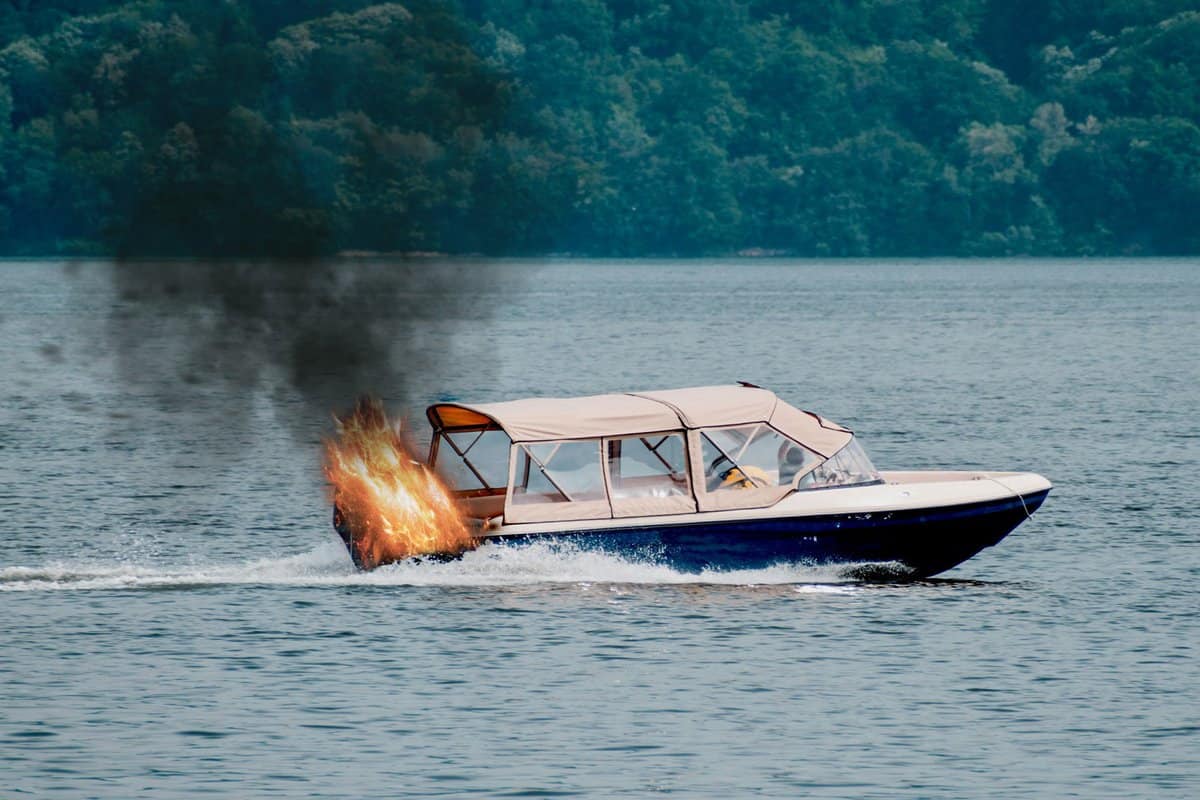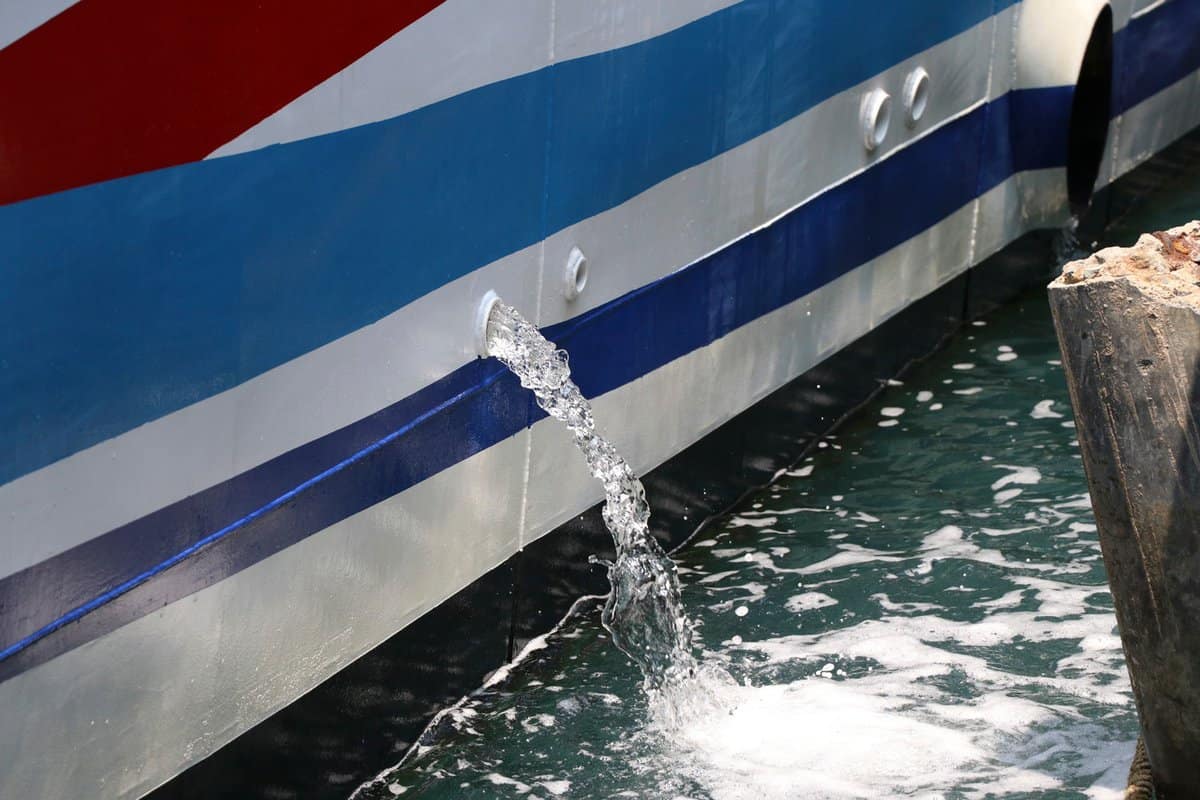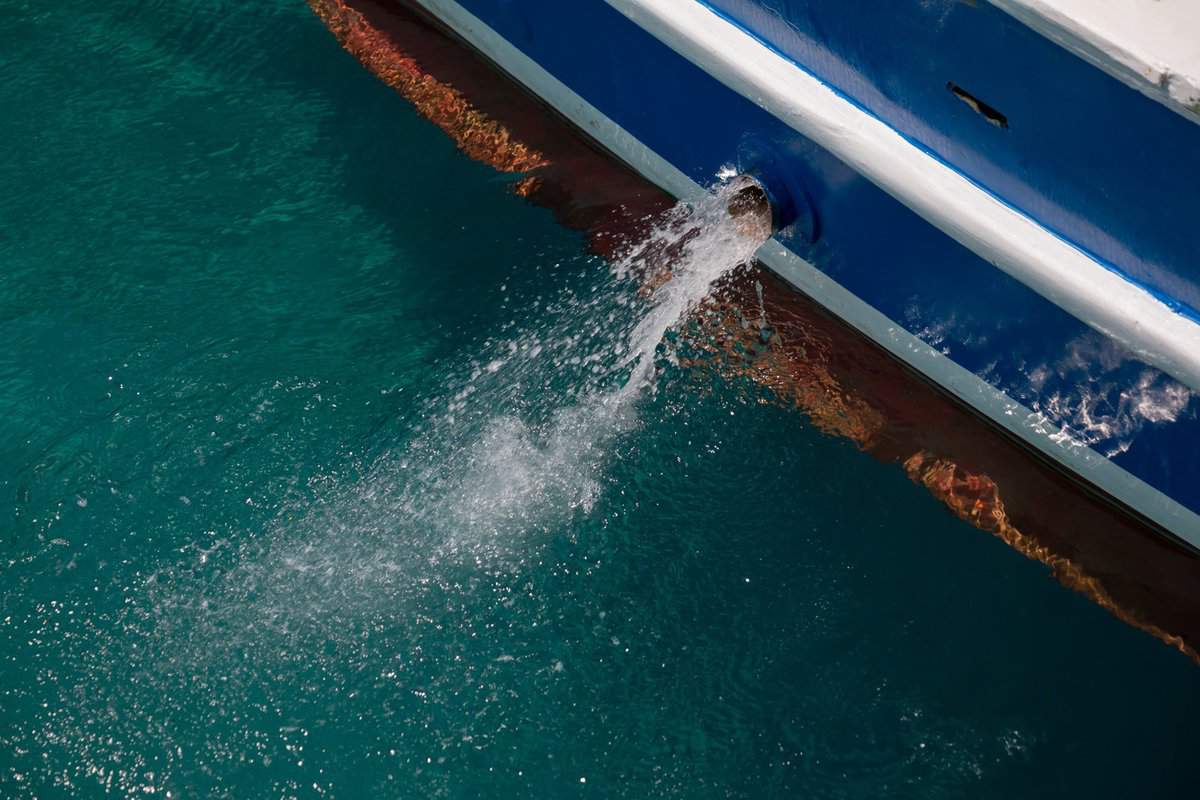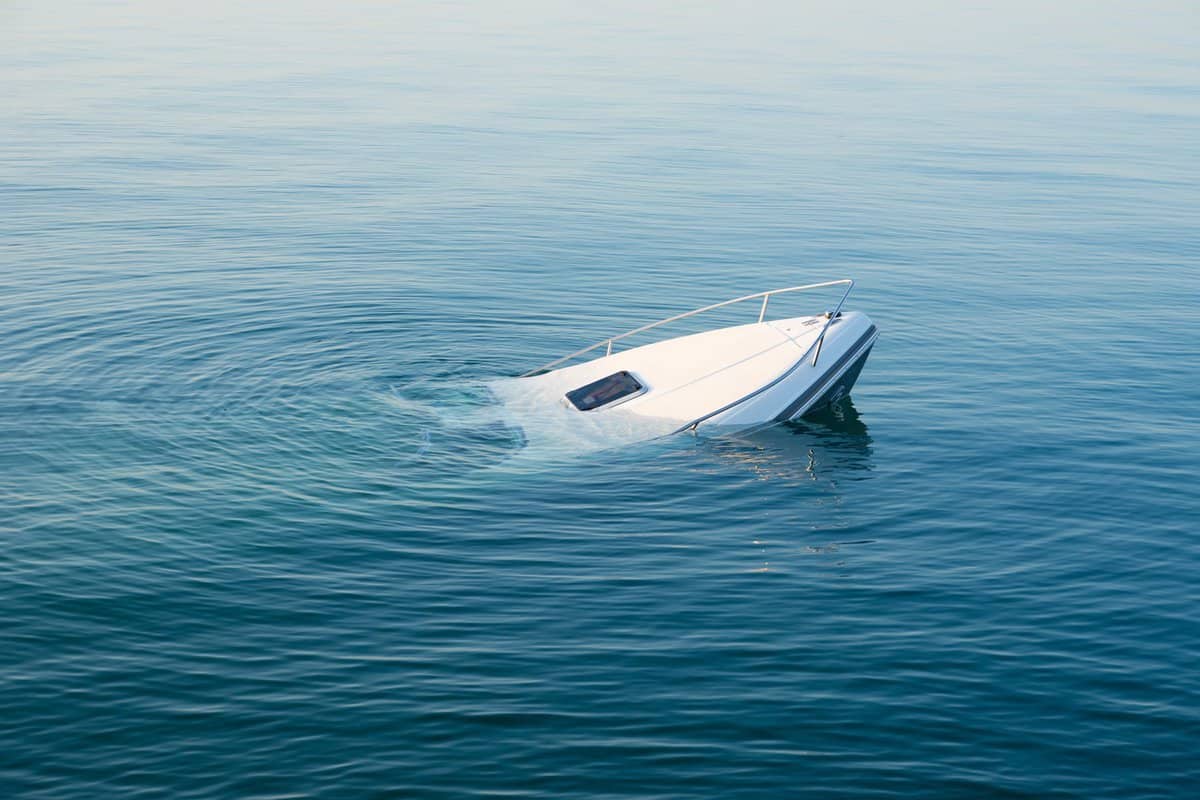Proper ventilation is critical for boat safety. Are you wondering how you can vent the bilge on your boat? You've come to the right place. We did the research to help you, and here's what we've uncovered.
You can use a natural or powered ventilation system to vent the bilge on your boat. Here is a step-by-step guide on how to proceed, beginning with running the powered ventilation system.
- Run the bilge blower for at least four minutes
- Inspect whether all combustible fumes have been exhausted
- Start the engine
Natural ventilation deters fumes from accumulating in the bilge when the boat is underway.
There is a lot to learn about venting the bilge on your boat. Delve in to find a more elaborate explanation of the steps to take. We also discuss problems that may arise if bilge water settles in your boat. Without further ado, let's jump right in.
![Water that was pumped out of the boat while parked at the pier. Water that was taken out of the ship - How To Vent The Bilge On Your Boat [Step By Step Guide]](https://vehq.com/wp-content/uploads/2022/11/Water-that-was-pumped-out-of-the-boat-while-parked-at-the-pier.-Water-that-was-taken-out-of-the-ship-How-To-Vent-The-.png)
Venting The Bilge On Your Boat
Gasoline fumes are some of the most dangerous fumes you can encounter aboard a boat. These fumes are typically heavier than air. Their higher density means gravity pulls harder on them, leading the fumes to seek out low-lying areas where they can settle.
Because the bilge is the lowest internal compartment on a boat, fumes typically heavier than air (such as gasoline or propane fumes) quickly accumulate here. If the fumes build up, they make the boat susceptible to explosions.

Boats require a proper ventilation system to eliminate flammable gases to minimize the risk of a catastrophic explosion. For this reason, the boats are fitted with a ventilation system that can be natural or powered.
There are regulations to govern the powered and natural ventilation systems for inboard boats that have installed gasoline engines, but the requirements are not as stern for outboard-powered boats.
However, all the ventilation rules still apply if the outboard-powered boat has an installed gasoline generator. Even if they aren't required, there is no harm in complying with all the regulations since they are put in place for your safety.
Here's how you can vent the bilge on your boat.
Powered Ventilation
A powered ventilation system relies on a bilge blower to circulate air from the bilge, via the ducts, to the atmosphere. The bilge blower is a motor mounted on a low-lying level of the boat's bilge.
The motor's capacity should be proportional to the compartment's volume. If the compartment is larger, it's possible to find one or more blowers in your boat's bilge. In addition, the ducts should be reasonably sized to provide the necessary air circulation.
Weather enclosures should not cover the ventilation openings. These steps will guide you when venting the bilge using a powered system.
1. Run The Bilge Blower

You can turn on the bilge blower from the boat's dashboard. You will generally find a warning label at all the engine starting points instructing you on how long you should run the blower before starting the engine.
Most manufacturers recommend running the blower for at least four minutes before igniting the engine. Please do not run the bilge blower the entire time you operate the boat since most of them lack the capacity to run continuously.
If you want to run the blower the entire time you boat, you can invest in a blower that supports continuous usage.
2. Inspect For Gasoline Fumes
Gasoline has a distinct smell, so fumes in the bilge or engine compartment are unlikely to go undetected. Sniff around these areas before you start the boat's engine as an extra precaution to avoid explosions.
Also, consider mounting fume detectors in the blige. Pick a suitable position low enough but above normal bilge water slosh level to install the detector.
3. Start The Engine
If there are no fumes, it is safe to start the engine. If you detect fumes, continue to run the blower until all the flammable gases are exhausted.
Natural Ventilation
Natural ventilation occurs when the boat is in motion. Here, you only need to ensure no obstructions are blocking the ventilation openings. Please note that gratings and decorative covers minimize the total cross-sectional area for ventilation, thus lowering the system's effectiveness.
Suppose your boat only has a natural ventilation system. In that case, it is wise to assess with your nose or a fume detector whether the system has eliminated the flammable gases before starting the engine.
Boats that rely on natural ventilation must have at least one intake and one exhaust ventilation duct. The ventilation ducts should have a cowl - a hooded opening that can scoop air. It's best to use cowls that don't reduce the size of the openings.
Please note that the powered ventilation ducting can constitute part of the natural ventilation system for boats with a powered ventilation system.
Positioning The Exhaust Duct
The exhaust opening that expels fumes into the atmosphere must extend from the open atmosphere to the lower bilge, above the normal level that bilge water accumulates.
Alternatively, the exhaust duct can expel air into a ventilated compartment, preferably a different compartment from the one that contains the supply vent.
The intake and exhaust ducts inside a compartment should be separated by at least 24 inches. It is best if these ducts are positioned on opposite sides of the boat to minimize the possibility of sending back exhaust air to the bilge.
Positioning The Intake Opening
The supply duct can draw air from an opening on the outside surface of the boat, a compartment that opens to the atmosphere, or a ventilated section whose supply is on the exterior side of the boat.
Ideally, the intake vent should be situated at least midway to the bilge or below the carburetor air intake level.
Note that ventilation, whether powered or natural, only exhausts fumes. Therefore, it cannot get rid of fuel spills in the bilge. These fuel spills pose an explosion risk since they keep emitting flammable gases into the bilge compartment.
The best course of action in the event of a fuel spillage would be to clean it first, then run the blower for some time to exhaust the flammable gases.
What Happens If Bilge Water Settles In Your Boat?

Rough seas, excess condensation, excess rainwater, untreated leaks in the boat's hull, or even leaking water pipes can cause water to settle inside the boat in the bilge.
It is not advisable to ignore bilge water since it can lead to unwanted outcomes, such as creating a environment for mold and mildew to thrive. Instead, a pump in the bilge should create pressure or suction, thus getting rid of the water.
Here are some side effects of letting bilge water accumulate:
It Compromises Your Boat's Structural Integrity
High moisture levels create an environment contusive to rust, which may cause the boat's engine and other metallic components to corrode.
Once the initial signs of corrosion appear, it often spreads rapidly. The risk of corrosion is even higher for boats that sail on salty water.
Rust can eat into the metal, eventually reducing it into a flaky, brittle powder. As the metal weakens, it reduces your vessel's seaworthiness.
It can be quite expensive to fix corrosion damage, and insurance rarely covers rust damage. Sometimes the insurers deny coverage of some accidents or sunken vessels, alluding to the role that corrosion played in the incident.
Taking extra preventive measures, such as avoiding water accumulation in the bilge, can protect your vessel from corrosion and save you the money you would otherwise spend on expensive repairs.
It Can Ruin Your Boating Experience
As mold and mildew build up in the stagnant water in the bilge, they can release a musty odor into the boat's cabin. Like rust, mold and mildew spread if left unattended, ruining your boat's interior and causing respiratory infections.
Inhaling mold spores can trigger allergic reactions such as coughing, running nose, and itchy eyes. Exposure to mold spores can result in clogged airways and asthmatic attacks in some people. These symptoms make you miserable, ruining the boating experience.
In addition, the higher humidity levels from stagnant bilge water can leave you feeling hot and sweaty since sweat fails to leave your skin as fast as it would if the humidity levels were lower.
It Increases Your Boat's Susceptibility To Sinking

Bilge water can make it impossible to detect leakages that may result in your boat sinking. Hull damage can cause too much water to get into the bilge at once, overwhelming the pump. As your vessel floods, its chances of sinking increase, putting your life and those on the boat at risk.
It is advisable to check that the pump is in good working condition before getting underway. If the pump works as intended, it will ensure that the bilge remains relatively dry, thus keeping your boat safe and comfortable.
Closing Remarks
You can use natural ventilation or a combination of natural and powered ventilation to vent the bilge on your boat. We hope this post has shed light on why you should vent the bilge and how you can go about it. Happy sailing!
Before you go, please consider checking out our other helpful posts:
